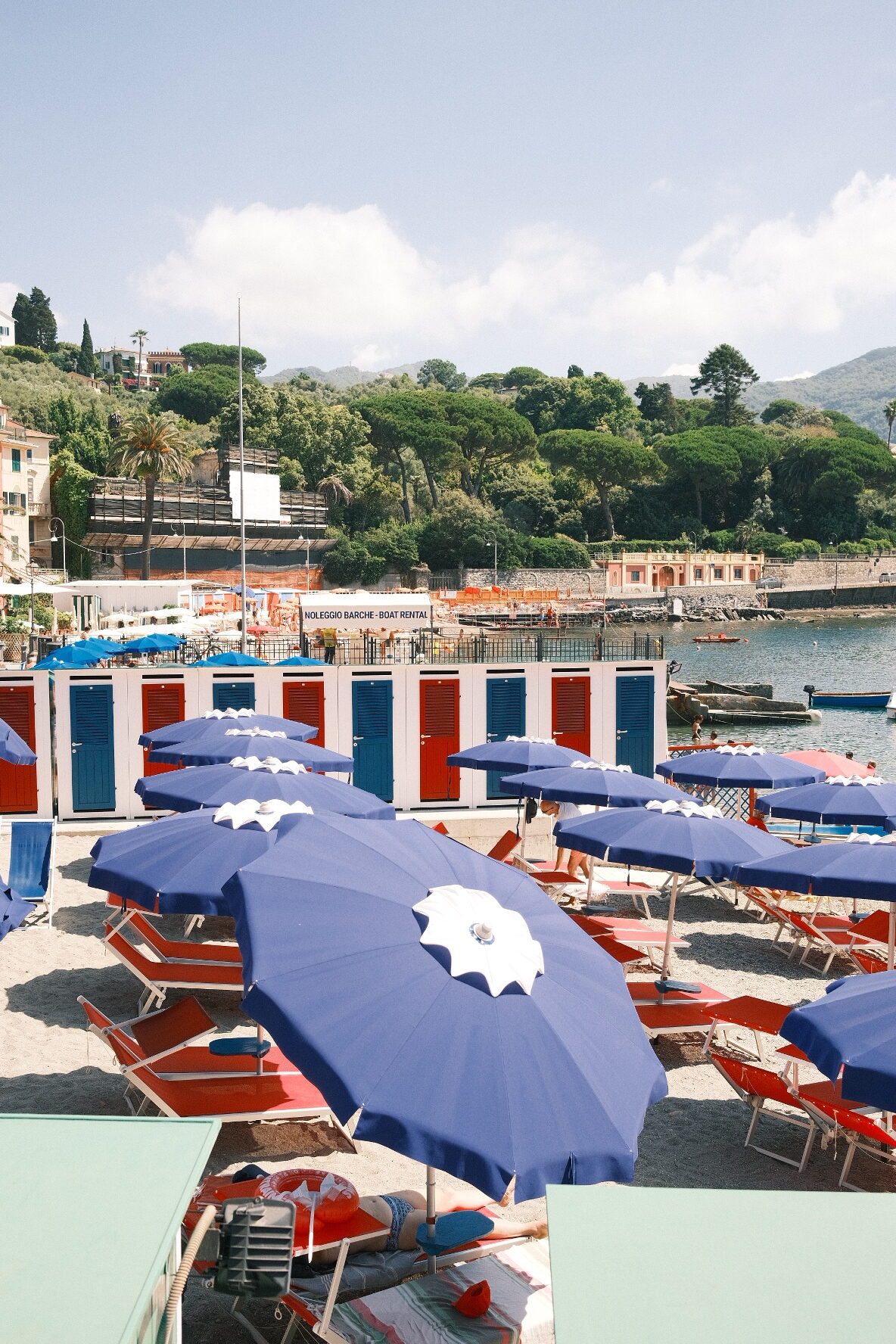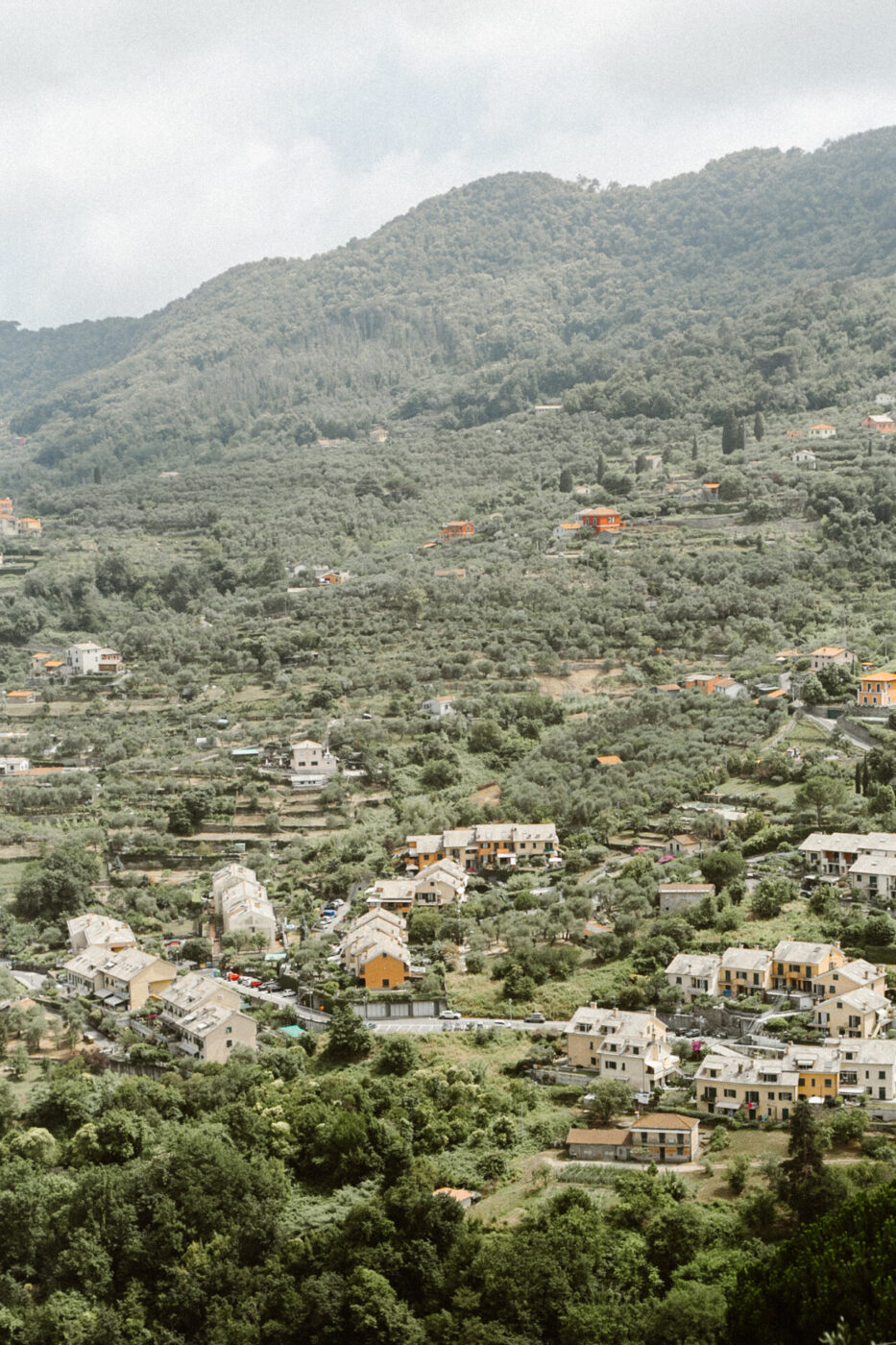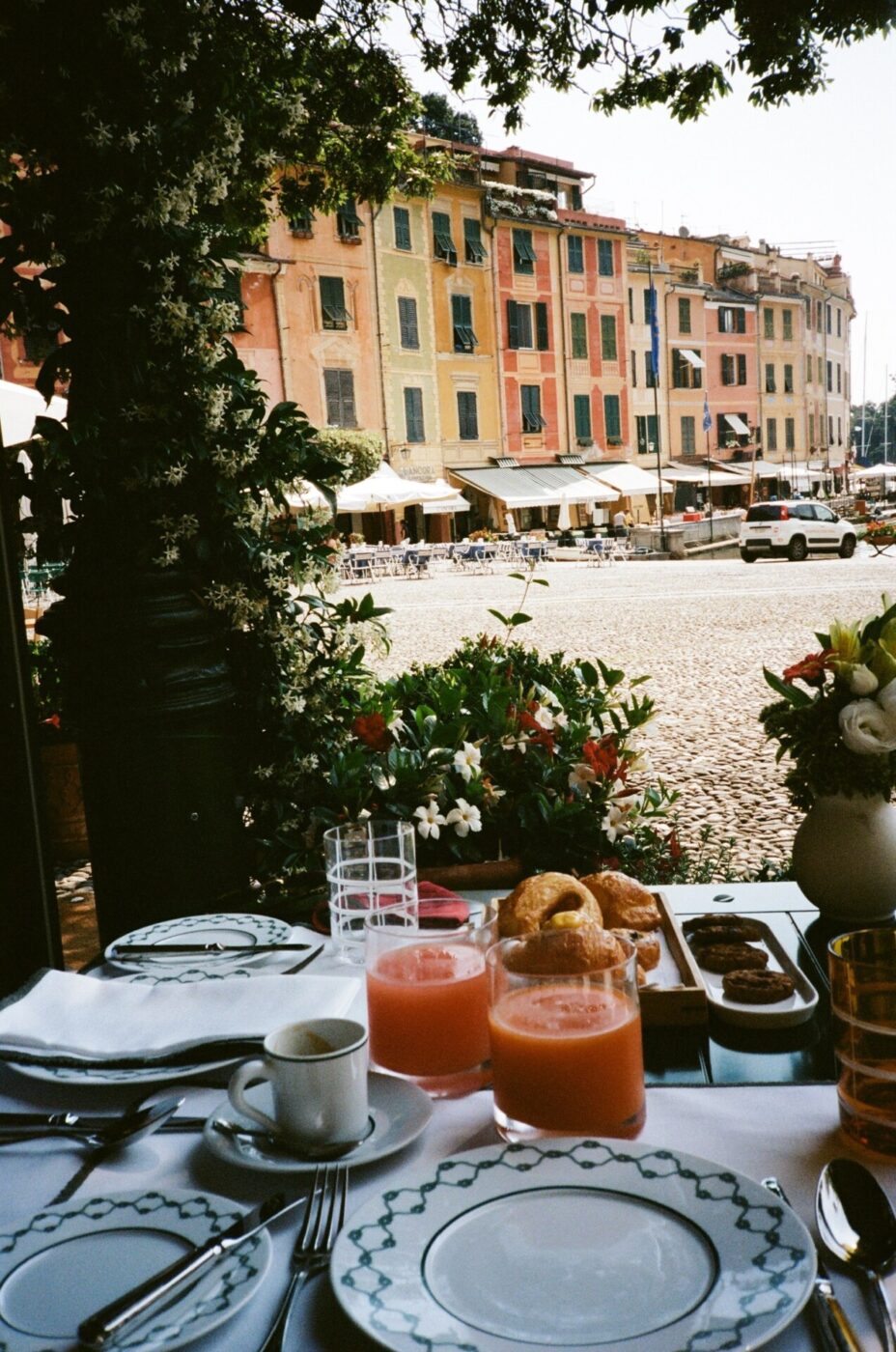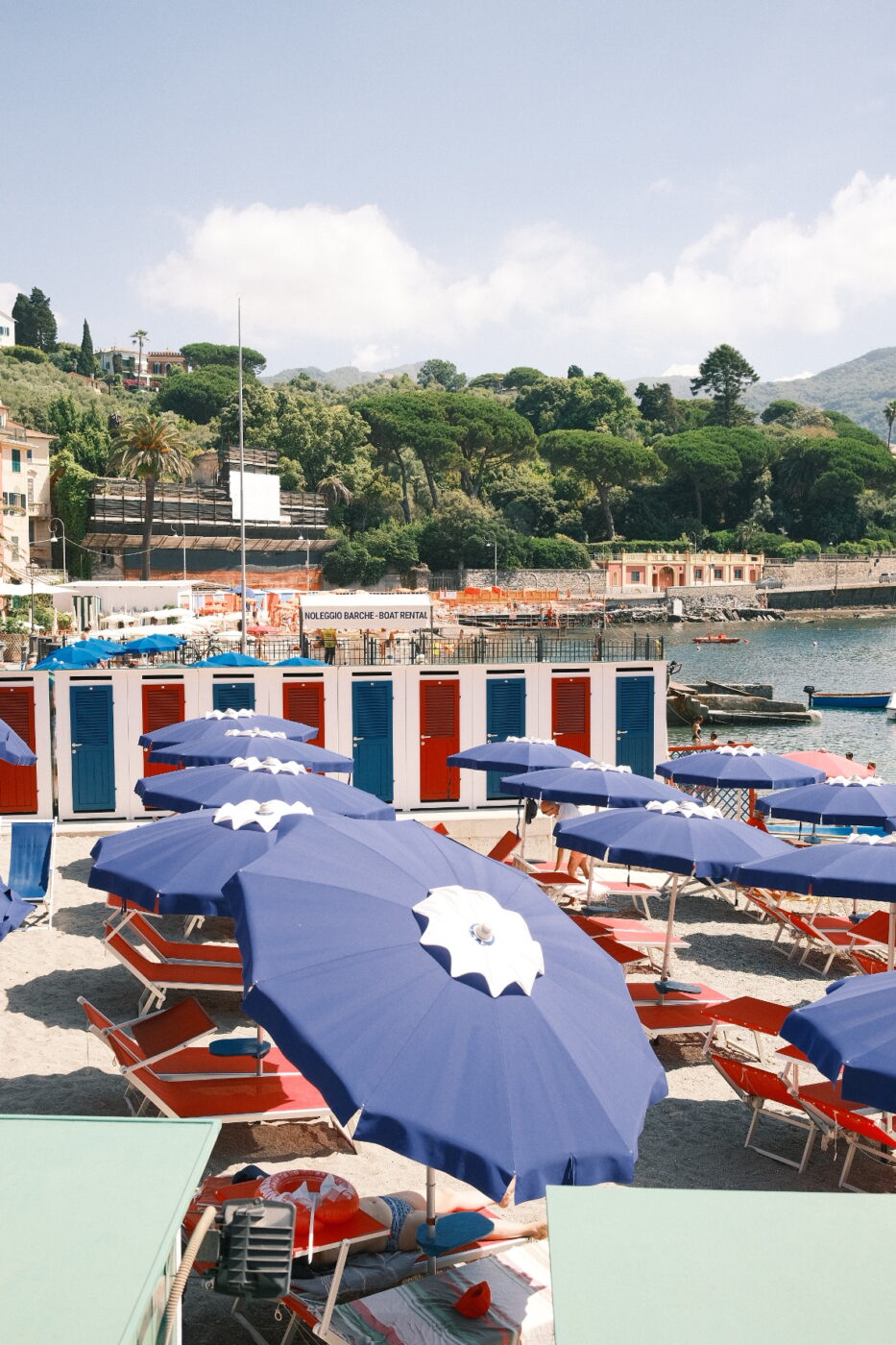Portofino is a living postcard, or so it wants you to believe. Luxury cruise boats dock in the harbor for a day, their passengers spilling into the streets by the thousands and staying just long enough to snap a photo and depart. Some come for a sea-view lunch or an aperitivo in the famous Piazzetta. Few walk beyond the tiny maze of streets in the center. One of Italy’s most popular, visited, and crowded resorts is, in fact, also one of the least lived-in, beyond the facade of colorful little houses on the harbor. Portofino fills up at 10 AM, but, at dinner time, it is deserted; this is when the town slips off her bella figura costume and puts on her house clothes, so to speak. After the sun goes down, Portofino is quiet.
There are 147, in number, real residents of the former fishing village. To this dwindling number we can add Milanese week-enders who are the historic owners of second homes and yachts, and a handful of billionaires who vie for villas–among the most exclusive in Italy. That brings the number of local registered citizens to 355. Portofino, as we have seen it in travel guides and heard of it from glamorous friends, is packaged into a brand and sold to the rich and famous.
Until the early 19th century, Portofino was just an unknown village of fishermen, sailors, and peasants along the Tigullio Gulf. In the mid-19th century, however, it was “discovered” by English aristocrats and German nobles, fascinated by its natural beauty. First, the town’s castle was bought, and restored, by English diplomat Montague Yeats Brown, who turned it into a summer residence and a meeting point for British high society; then, the first hotel, the luxurious Splendido, was built. Bars and restaurants followed, and villas began to pop up all along the coast. Portofino’s soul split into two; on the one hand, that of the Ligurians, and, on the other, that of the wealthy families who would enter the social fabric of the town, forever redefining its identity.
Around the mid-20th century, tourists began to catch wise to this storybook holiday destination, and, for better or for worse, aperitivo in the Piazzetta has now become one of the international clichés of an Italian summer.
In 1954, journalist Guido Piovene in his legendary post-war grand tour, Viaggio in Italia, called Liguria “closed, laconic, commercial, reserved with the foreigner, lacking in imagination.” Even today, partly because of its success, many would use the same words. Overtourism and depopulation are two sides of the same coin; there is a collective attempt to keep the area alive–not just a few months a year–and reverse the trend of hit-and-run tourism. But the tides are changing, and gentrification has taken an interesting turn in recent years. Younger generations of locals are opting to stay and redevelop the town, rather than seek opportunity elsewhere. A whiff of newness now blows from Portofino through Levante to Ponente.
To look at it now, the town itself does not seem to have changed over the last two centuries. And, at least in appearance, it hasn’t. Since 1935, the whole promontory from Rapallo to Camogli has become a natural park, and the pastel-painted villas, houses, and palaces have remained (fortunately) intact. New builds are forbidden. Every centimeter is, therefore, extremely precious, and in the warehouses where fishing nets were once stored, boutiques and restaurants have opened. The outposts of big brands such as Rolex, Pucci, and Dior alternate with historic restaurants, visible relics of the Portofino of yesteryear.

Photo by @chris.mlr
The Green Side of Portofino
Go behind the facades of those colorful little houses and beyond the tourists taking selfies, and you’ll find a lush green territory, rich in springs, dotted with mills and olive presses.
Until recently, agriculture in this region had long been abandoned in favor of building up the touristic center of town. The hills of the region are particularly tough to cultivate and, in Liguria, the term “heroic agriculture” was used for those who tried. Now, projects like La Portofinese are reviving this past. The family-run farm, by Mino Viacava, resurrects ancient practices that had been disused, recovering the crops of yesteryear and bringing agriculture and animals back to an area that, prior to the 1930s, had these traditions at their core.
Vineyards and olive groves, a source of livelihood for generations of Portofininans, have now finally been recovered and brought back into full production. Their produce can be sampled at Ü Caban, a small indoor room and terrace lined with wood and furnished as if it were a boat; at Mulino del Gassetta, a former mill, now a refreshment kiosk, small museum, and information point in the preserved area of Portofino Park; and at Faro, a lounge bar on the tip of the promontory with breathtaking views of the Gulf of Tigullio.
In recent years, these new projects have not only reinvigorated the land, but the gastronomic scene, as these high-quality, local products percolate through restaurant and bar offerings.
Portofino Gin was created by the grandson of Klaus Pudel, a man deeply respected for saving Portofino from destruction during World War II, and, later in the 1950s and 1960s, known for hosting the finest parties of the La Dolce Vita era. It seems only fitting, then, that his grandson, Ruggero Raymo, would go into spirits. He teamed up with Alessandro Briola, childhood friend and owner of Hotel Nazionale and Ristorante Pizzeria da Nicola (two Portofino mainstays). Together with another friend, Chris Egger–a Swiss native who’s spent every summer vacation in Portofino–they planted two hectares of Pudel’s 12-acre estate with botanicals. They started taking orders by knocking on the doors of the clubs and restaurants they had known all their lives, and sold them on their vision of a new, refreshed Portofino. Just four years later, they export to more than 40 countries, and in Portofino they have become the official distillate, mixed with tonic and stirred into Negronis in every bar in town.
Winterose, another purveyor of quality alcohol, is a wine shop that sells local produce, and serves platters of Ligurian cheeses and cured meats. They pour Made in Portofino wines produced by La Cappelletta, the estate of the Duchess of Westminster, godmother of Prince William, and descendant of Tsar Nicholas I and writer Aleksander Pushkin. Its owner, Emanuela Cattaneo, a sommelier from Lombardy, fell in love with Portofino and decided to stay.
You can also eat and drink local thanks to the Niasca Project, founded by Portofino residents who have committed themselves to the regeneration of the village and the mountainside, and now produce lemonade, pesto, and jams, as well as run a guesthouse, a cooking school, and a shop on Via Fondaco, the village’s only street that creeps up the mountain.
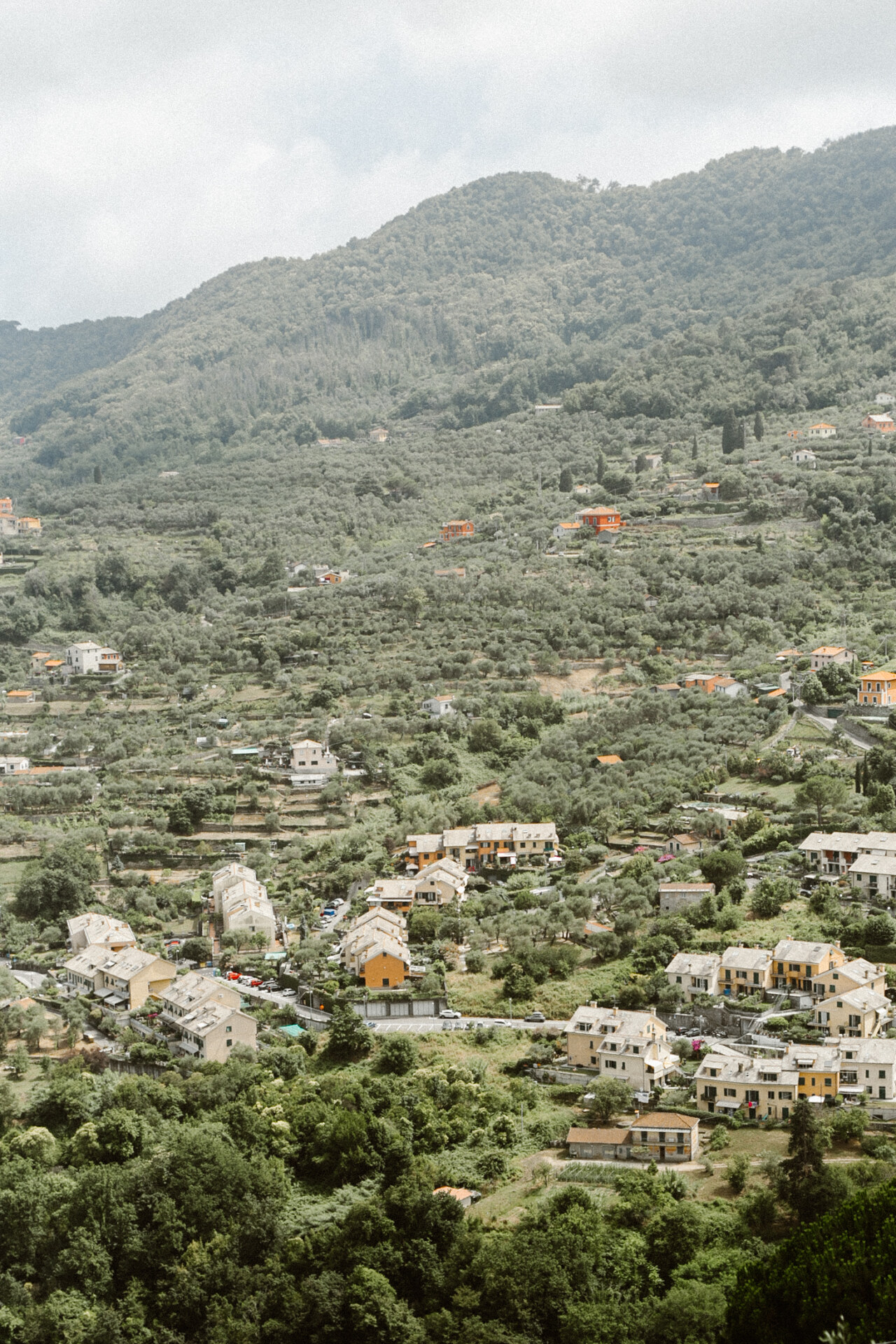
Photo by Phoebe Hunt
A New Era in Dining
There are certain restaurants that are as much a part of the fabric of this town as the staggering cliffs and blue sea: Puny, with its pappardelle pesto with tomato; ö Magazín for fritters and seafood dishes; and Da I Gemelli, the oldest restaurant in Liguria, run by the eighth generation of the Giovannini family. These all recall the era of Old Hollywood glamor. But Portofino cannot rest simply on its laurels, and a handful of industrious restaurateurs, hoteliers, and producers have in recent years been working to breathe new life into the Portofino breeze.
Yet more and more establishments are using Portofino’s well-heeled crowd of tourists as a litmus test to set the bar high on fine dining, a concept that is surprisingly quite new to Portofino.
In 2021, Italy’s most famous star chef, Carlo Cracco, from Milan, doubled down in the Piazzetta, taking over the disgraced Pitosforo restaurant in Portofino and turning it into the area’s first fine dining address. In 2017, the team behind Langosteria (a renowned seafood restaurant in Milan) took over their first local venue and then the historic Bagni Fiore in Paraggi, a few minutes’ walk from Portofino. This marked a turning point in local dining, shaking up the cards that had been stagnant for some time. Surely what Liguria lacked was not quality fish, but a contemporary lifestyle: it’s okay to evoke the golden days of Winston Churchill, Jackie Kennedy, and Rita Hayworth, but Portofino wanted to look forward, to Chiara Ferragni, the Kardashians, and Dua Lipa. And seemingly, it worked–as of 2021, the Bagni Fiore is dressed in Dior’s toile de joie and the already stratospheric price of sunbeds has doubled, but 80% of the guests are Italian.
Paolo Gastaldo, from Genoa, has returned to become bar manager of Splendido Mare, giving the historic hotel a jolt of new life. Alongside renovated rooms in Piazzetta dello Splendido, the former 16th-century Benedictine monastery overlooks the bay from above. It’s always been beautiful, but now it’s also a great place to have a cocktail that’s a cut above the rest. At DaV, they have brought the Cerea family of the Michelin-starred restaurant Da Vittorio into the kitchen; raked in professionals, artisans, and local staff; and now serve up refined versions of Ligurian classics.
Portofino remains a dichotomy: on one hand, a provincial village, whose properties can be counted on your fingers; on the other hand, a playground for the wealthy, oozing Old World glitz and glamor. But today, the Portofino brand is growing and evolving to offer a little bit of its true self to its many visitors. Maybe this new wave is the calm before the next blank check invasion, but, as they say in these parts, in good weather, we are all sailors.

Photo by @chris.mlr

